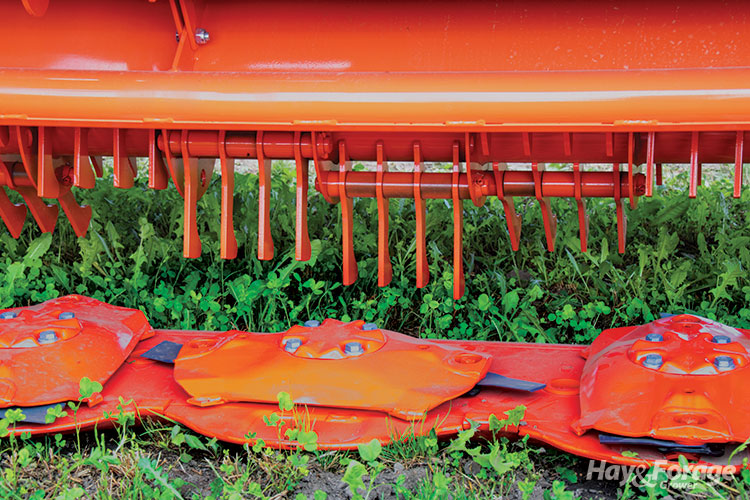The author is a managing partner in Elite Ag LLC, Leesburg, Ga. He also is active in the family farmin Rutledge.

It may not seem like it, but first cutting is right around the corner. In fact, we’ve already started down here in the South with winter annuals. Ryegrass, wheat, and oats are the most common annuals chopped and baled during the early spring in our area, and each offers its own unique challenge when it comes to putting up excellent forage.
Our annual forages are not unique with their propensity to dry down slowly. Triticale in the Southwest can be challenging to get harvested at the ideal stage of maturity as it seems to turn to “rope” in just a few days after its optimum harvest date. Alfalfa in the North and West can sometimes offer the challenge of drying down too fast when it is chopped.
The decision every forage producer must make when purchasing a mower is what conditioner is going to be most effective for their situation, or if one is needed at all. I’ve had this discussion dozens of times with different people across the country. Each situation is unique, and there is no cookie-cutter answer that fits every farm. Let’s discuss each type of conditioner and go over the pros and cons for each.
Going cold turkey
Let’s start with no conditioner, which has always been a popular option across the South with three-point hitch mowers. It’s also becoming more common in the North for producers who only chop their alfalfa. Eliminating the conditioner is a cost-effective way to harvest forage, and with some tedding, it’s still possible to reach a balable moisture content. There are some people who think that not conditioning hay can improve the quality and dry-down speed of the forage.
That might sound good until you get into some young, 6- to 8-ton wet annual forages lying on wet soil. It will take days to lose 5% moisture and will require multiple trips with a tedder to reach baling or chopping moisture. Each pass adds the risk for elevating the ash content of the feed. For dry hay, not having a conditioner might add hours or days to the dry-down time, which can result in more rained-on hay.
Best for grasses
A popular option in the eastern half of the U.S. is the V-tine, flail, or impeller conditioner. These are all basically the same conditioning system. This system uses mostly V-shaped tines and an adjustable baffle hood to increase or decrease the amount of conditioning.
The overall design and cost of this option is reasonable. It works well in grass crops as some are too flexible to be effectively crimped. The flail-type conditioner works by stripping wax from the stem and leaf, which speeds the dry-down time. The downside is that the tine speed and baffle hood need to be adjusted for different crops. If not adjusted properly, the aggressive setting used for ryegrass is likely going to be too aggressive for a legume and will knock off the high-value leaves.
Most popular
Another extremely popular option that can be found in most states is the roller conditioner. Rubber rollers have been around for a long time and are still popular where legumes are harvested. They do an excellent job crimping the stems. Some producers have shifted away from the rubber rolls due to the cost and rapid wearing of the rubber, which lowers the crimping effect.
Steel roller conditioners have taken the place of the rubber ones on many mowers. They come in different shapes and sizes, and Massey Ferguson offers a double roller conditioner. The durability of the steel rolls has been their biggest selling point. Some people say they do not crimp as well as new rubber rolls, but the longevity has seemed to be a strong selling point. As acreage per farm keeps growing, equipment longevity becomes more important.
Steel rolls do an excellent job with legumes, as you would expect. They also perform well with cool-season annuals, as most of them have thicker stems. All roll-type conditioners tend to underperform in our southern perennial grasses.
Deciding on the right conditioner, if any, deserves careful consideration when purchasing a mower-conditioner. In addition to the basic types listed here, there are also some after-market conditioners available.
This article appeared in the March 2022 issue of Hay & Forage Grower on pages 28 and 29.
Not a subscriber? Click to get the print magazine.

